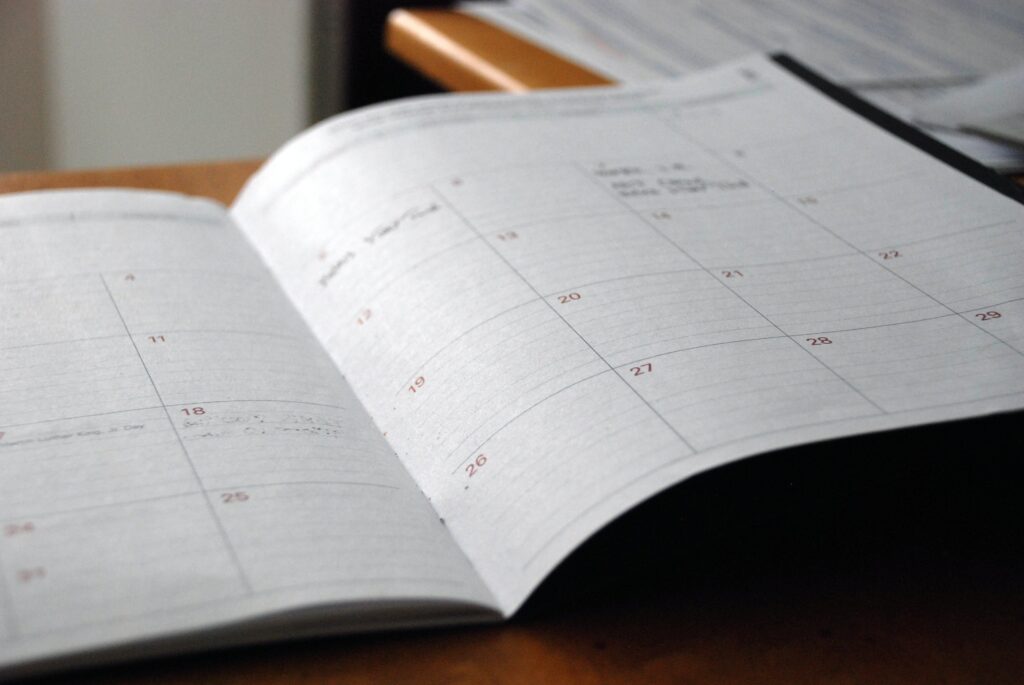Monthly One-on-One Meeting Template for High-performing Teams and Managers
The foundation of a successful team is trust. This sentiment is shared among many leaders and authors, most prominently by Patrick Lencioni and his pyramid of highly functioning teams. Building manager-employee relationships on trust can act as a catalyst; it drives performance, accountability, and alignment. It’s like oxygen for a successful team – one can’t exist without it.
And the best way to build trust is to have effective, frequent one-on-one meetings with your direct reports.
One-on-ones allow both the manager and the employee to communicate transparently, connect personally, unpack and discuss their progress, and tackle any issues that may hinder their progress. Beyond building trust with employees, some of the more tangible results of effective 1:1s for you and the organization are:
- Improved productivity and execution
- Better engagement
- Reduced turnovers (remember people leave managers, not companies)
- Effective continuous performance management
Lack of an effective one-on-one template or a system is often what holds managers back; If you are already doing 1:1s, but you don’t think they create enough value, then the problem may lie within your system. Without a system or a process to guide the steps you and your direct reports need to take before, during, and after the meeting, it’s easy to fall short of expectations and be disappointed.
That’s why we decided to share this template with you. These meetings should be regular and predictable–at least monthly– for everyone to know when to expect them and scheduled for ideally 60-75 minutes. The reason for consistency is that it makes it easier for everyone to commit to, knowing exactly what to expect.
Why Monthly?
Traditionally, one-on-ones occur every quarter and are often mixed with performance reviews. But I want you to think about your last quarter. Can you remember everything that happened?
A lot happens in a quarter, and as an employee goes through the ups and downs, it’s easy to miss out on the opportunity to support them, praise them on a key milestone, or hear their feedback. And this can hurt the engagement level in your team massively.
Even within a month, there’s a lot to talk about, and though having a bi-weekly or a weekly cadence is ideal, it does become unrealistic when you manage a team with more than 5 people. You should be having 1:1s with individuals at least once a month, so a monthly cadence is a good place to start.
At the beginning of each quarter, create a schedule for the next three months, so they are routine and predictable.
Why 75 Minutes?
Your one-on-one should not feel rushed. These are opportunities to unpack issues and address them effectively. That’s why you should book at least an hour but ideally 75 minutes so that you have enough time to support employees, drive accountability, and build trust. This is something that many great leaders, including Andy Grove, have supported:
“Anything less (than 60 minutes), in my experience, tends to make the subordinate confine himself to simple things that can be handled quickly. The subordinate must feel that there is enough time to broach and get into thorny issues,” wrote Grove.
The High-Performing One-on-One Meeting Template
Scheduling a regular 75 minute monthly one-on-one with everyone on your team is a massive first step that will already create a great impact on employee engagement and performance. The next leap is to set a recurring, collaborative agenda that guides the conversations with employees and makes them more effective.
Whether you’re looking to improve your one-on-ones or planning on doing one for the first time, this template will help you have an impactful meeting with everyone on your team and help them perform at their best.
Before and Between One-on-One Meetings
A great one-on-one starts with the routine before. As mentioned, your monthly one-on-ones should be already scheduled at the beginning of the quarter.
Another important routine and habit to develop throughout each month is keeping an ongoing list of issues and topics to discuss. You and the employee should maintain a list and add to it as issues arise so that nothing gets missed, you’re continuously making progress, and you always have a populated list of topics to address.
Just before the meeting, combine the two lists to create one shared list of issues.
During the Meeting
Having created the foundation for a successful one-on-one, it’s time to talk about make the most of the meeting and create the greatest impact. Following a structured agenda helps you stay on track with the conversations you need to have and ensure effective use of time. This is the suggested agenda you can use:
One Word Opener (5 minutes)
Start by asking the employee (and yourself) a simple open-ended question; “How do you feel right now?”
Sharing how you feel helps calibrate both of you for the conversations ahead; it closes the door on whatever was happening before and helps you be present for the conversations to come. It also acts as the first step in building trust and openness.
We are a big fan of using the Mood Meter framework from Yale Center for Emotional Intelligence. You start with a quadrant based on your energy level and pleasantness and then find the label that best describes how you’re feeling right now:
Wins (5 minutes)
Next, take the time to celebrate what key milestones they have achieved and the success they’ve had over the last month. It’s important to have positive feedback and a genuine moment of appreciation at the early stages of the conversation. Acknowledge and praise their wins. It might help to keep an ongoing list of wins for each of your direct reports so that you have a reference.
Personal Check-in (10 minutes)
This is arguably the most important step in maintaining engagement with your people. Checking in on a personal level with open-ended questions is a great way to break the ice, create psychological safety, and build a stronger relationship, especially if you haven’t built rapport with them yet. Have some questions ready, make sure when you ask them the question, be sincerely interested in their response and encourage them to talk about themselves. It’s important for them to feel their voice is being heard. They may be reluctant to open-up personally; You may find it helpful to share from your own personal experiences as it relates to them as a way to make them more comfortable and spark a conversation.
Here are examples of one-on-one meeting questions:
- How do you prefer to receive feedback?
- What’s your favorite podcast or show right now?
- What’s one thing I could do to better support you?
- What do you think the team should stop doing?
- What’s one thing you would change at work that would improve your personal life?
- How well do you feel like you know your coworkers?
- Do you have any questions about [a recent announcement]?
- Who do you think is at risk of leaving the company?
What’s important to note is that your work isn’t done when you ask the question. As the ex-CEO of SoulCycle said in a NY Times interview, you need to ask follow up questions, typically How and Why, to fully understand their answers. This will help you to not only gain better insights but continue to build more trust and rapport.
Review Personal Scorecard (5 minutes)
Each individual should have 1-5 numbers or metrics that they are responsible for (at least in part) and can be used as a reference for their productivity within the role. Building a personal scorecard for each individual is an important tool for managers as it gives you an objective point of reference when discussing each person’s productivity and execution. Using metrics to direct the discussion around their production, the individual becomes less defensive and more open to receiving constructive feedback.
Review their personal scorecard together and identify any areas for improvement but don’t dwell on it. Capture it on your list of issues to discuss later in the meeting.
Review Goals/Initiatives (5 minutes)
This is your opportunity to check-in with the employee’s progress on both company goals or projects they are accountable for and their own career development goals. Ideally, you should have a central place to capture and manage the progress of goals, like LynchPyn. Review it together and identify roadblocks that hinder their ability to achieve each goal successfully. Again, don’t dwell on it; this is not the time to offer feedback just yet. Add it to the list of issues so you can give it the required attention in the next section.
Address Issues and Topics (30 minutes)
It is finally the time to pull out your final list of issues and topics to be discussed. It should contain items from before the session and what you’ve captured from reviewing the scorecard and goals progress. Review the list together and collectively agree on the top 3 items that absolutely need to get addressed, ranked from 1 to 3 by priority. Use the allotted time to address the issues. Once you have addressed the top 3 items, move onto the next pressing issue.
Remember, this is your opportunity for coaching, offering ideas on how to improve, and valuable feedback. Point out their strengths but also identify concerns and challenges. Help them get unstuck so they can do their best work.
Action Items (10 minutes)
As the one-on-one starts to wind down, reflect on the previous section’s discussions and capture any to-dos or action items. Review the list together and make sure you’re both clear on what needs to happen and who is accountable for it.
Rate the Meeting (5 minutes)
Bring the meeting to a close by rating it on a scale of 1-7, with 7 being the perfect score. As a rating scale for a single question, the psychometric literature suggests a 1 to 7 scale reduces bias and offers a more accurate result.
What Now?
The next step is to put this meeting agenda to work:
1. Schedule your recurring one-on-ones with your employees
2. Start an ongoing list of issues
3. Prepare for your next one-on-one by copying this agenda into a document and populating each section
Want to track and manage your goals in one central place? LynchPyn can help you track and manage company goals and personal goals in one place while providing you with insight into your team’s activities, progress on goals, and pulse. See for yourself and check out LynchPyn today.




Leave a Reply